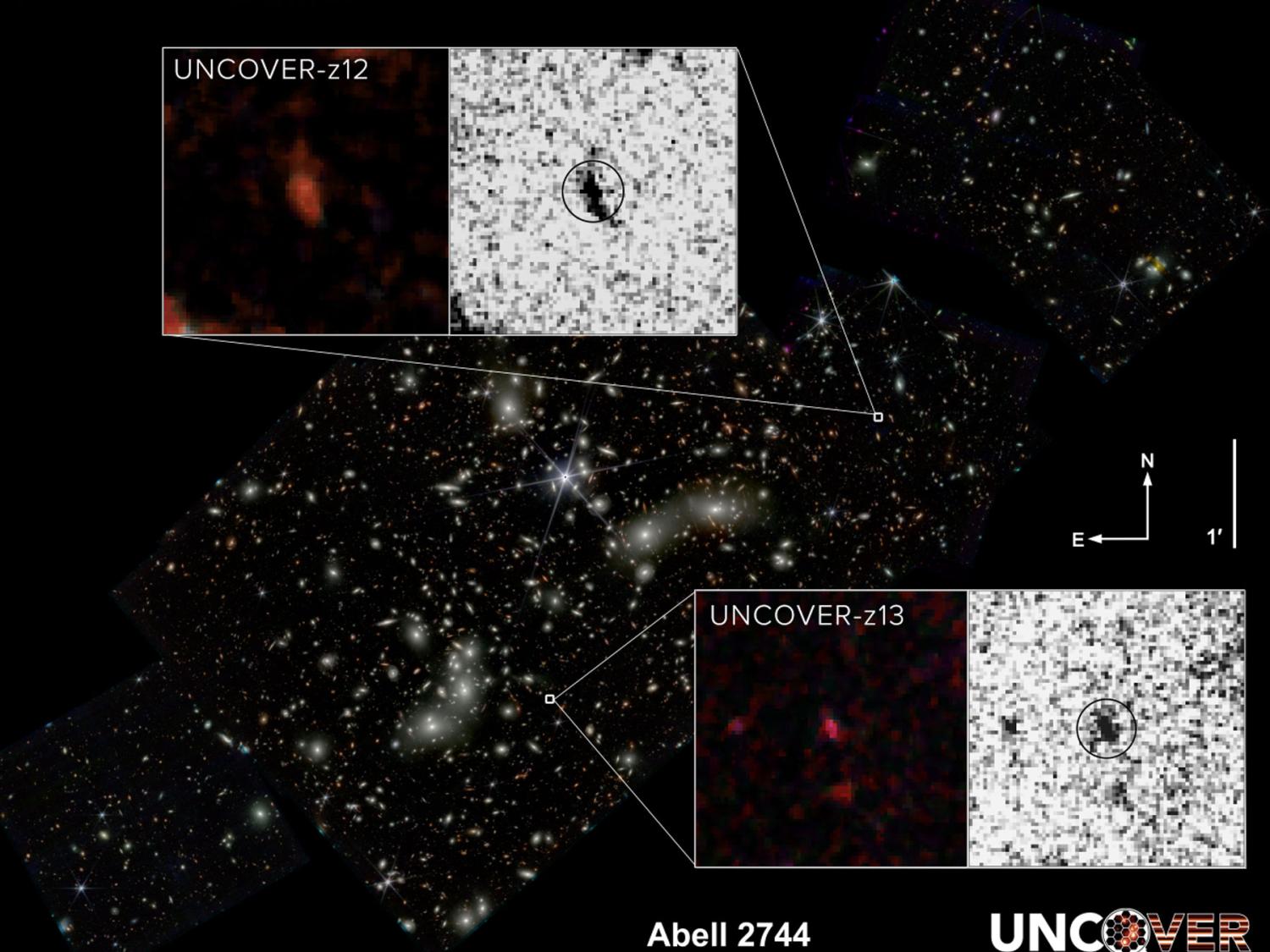
Abell 2744 tagged posts


Hubble Frontier Fields view of Abell 2744. Credit: NASA, ESA, and J. Lotz, M. Mountain, A. Koekemoer, and the HFF Team (STScI).
Astronomers have found 76 new ultra-diffuse galaxies (UDGs) in the massive galaxy cluster designated Abell 2744 (also known as Pandora’s Cluster). The discovery updates the current census of galaxies in this cluster and could help better understand the nature of UDGs in general. UDGs are extremely-low-density galaxies. The largest UDGs have sizes similar the Milky Way but have only about 1% as many stars as our home galaxy. The mystery of UDGs is still baffling scientists as they try explain why these faint but large galaxies are not ripped apart by the tidal field of their host clusters...
Read More
Results of a digital simulation showing the large-scale distribution of matter, with filaments and knots. Credit: V.Springel, Max-Planck Institut für Astrophysik, Garching bei München
Matter corresponds to only 5% of the Universe. ~1/2 of this still eluded detection. Numerical simulations made it possible to predict that the rest of this ordinary matter should be located in the large-scale structures that form the “cosmic web” at temperatures between 100,000 and 10 million degs. A team observed this phenomenon directly. The research shows most of missing ordinary matter is found in the form of a very hot gas associated with intergalactic filaments.
Galaxies are formed when ordinary matter collapses then cools down...
Read More




Recent Comments